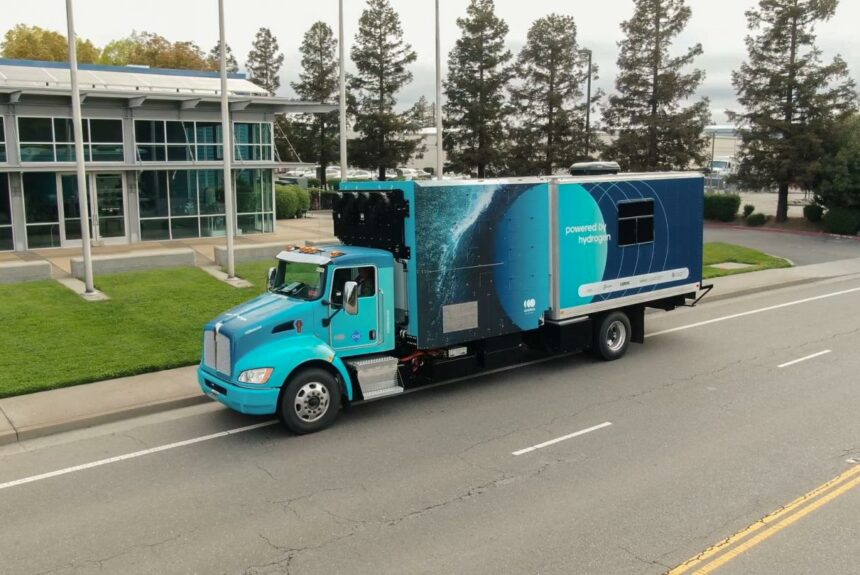When a natural disaster rips through a community, emergency responders are the first on the ground to save lives and provide resources. A new public-private partnership has emerged to help deploy, environmentally-friendly emergency response vehicles that can help communities in many ways.
Multiple U.S. federal agencies, including the Department of Energy, Army Corps of Engineers, and the Naval Research Lab have partnered with Cummins, a commercial truck and locomotive engine maker, to create H2Rescue. H2Rescue is an electric box truck powered by hydrogen fuel cells that will be used as the prototype for federal emergency relief trucks. The versatile vehicle can be a small power plant, a supplier of clean water, and a mobile command center.
>>>READ: Sesame Solar Wants to Change How We Power Disaster Relief
Each truck will have a hydrogen fuel cell tank system that will carry roughly 175 kilograms of fuel. That’s enough fuel to generate 1,800 kilowatt-hours of energy, which can power 15 to 20 American homes for three days. The fuel tank feeds batteries within the truck. If it is exporting power, the truck can turn its batteries off and on again to keep them charged. Experts working on the truck say that while powering full homes would drain available fuel within a few days, H2Rescue could keep computers and similar technology up and running for weeks. This will save time for emergency responders who will no longer need to haul generators to get their communications online.
In addition to providing power to the grid and mobile communications units,H2 Rescue will also be able to provide clean water to local communities. As Nicholas Josefik, an industrial engineer in the U.S. Army Corp of Engineers Construction Research Lab, told IEEE Spectrum, “Any time the fuel cell is producing energy to move the vehicle or to export power, it’s generating water.” Based on the amount of fuel these trucks carry, that means roughly 1,500 liters of clean water is available wherever H2Rescue deploys the vehicles.
Josefik further explained how H2Rescue could simplify emergency operations:
“In a traditional emergency situation, you send in a diesel truck and that diesel truck is pulling a diesel-powered generator, so you can provide power to the site. And another diesel truck is pulling in a fuel tank to fuel that diesel generator. A third truck might pull a trailer with a water tank on it. But when the H2Rescue drives to a location, you won’t need to pull that generator behind you, because the truck itself is a generator. You don’t have to drag a trailer full of water, because you know that while you’re on site, H2Rescue will be your water source.”
Natural disasters impact communities across the country. H2Rescue may soon be able to provide the water, electricity, and communications needed to recover from and adapt to these events.
The views and opinions expressed are those of the author’s and do not necessarily reflect the official policy or position of C3.
